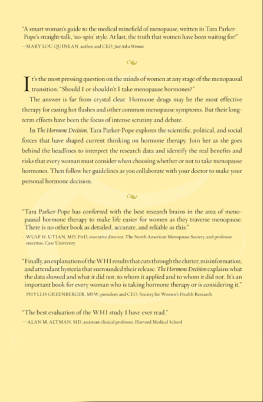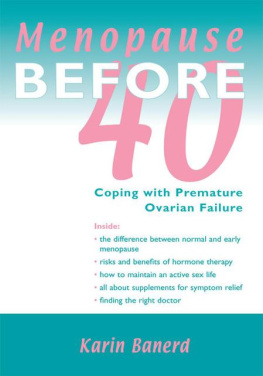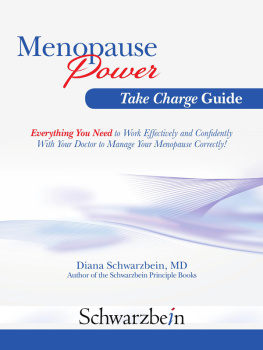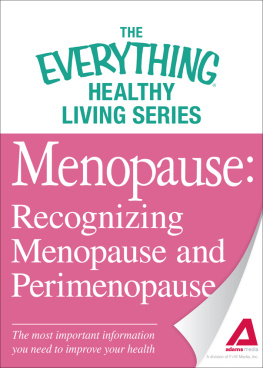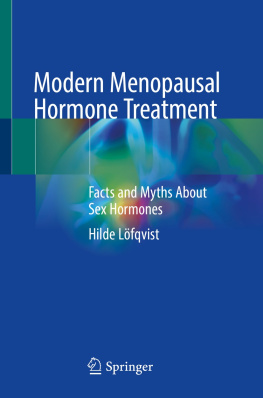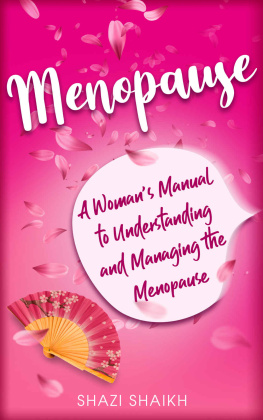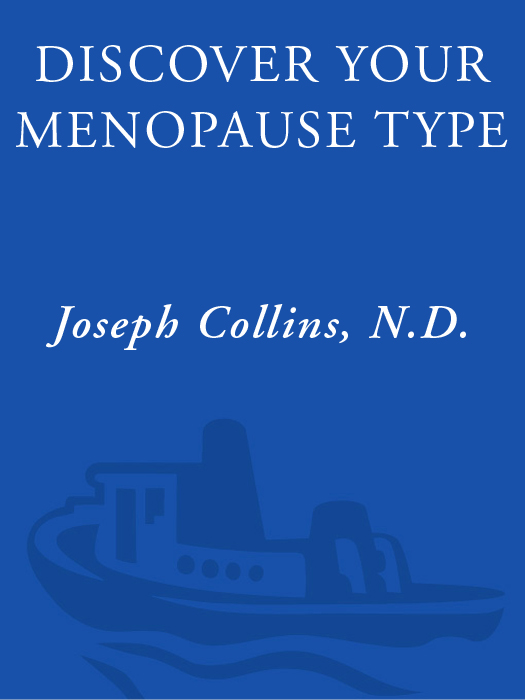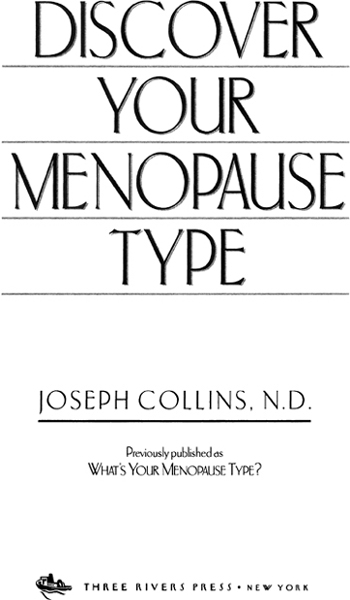FOREWORD
A s a woman and a physician, I have focused my practice and passion for many years on womens health issues. As cofounder and acting medical director of a unique, integrated clinic in Fort Collins, Colorado, I am part of a team that incorporates numerous modalities when working with patients. Because of this I have had the opportunity to assist many women through various transitions in their lives.
Menopause is a normal transition all women must experience, but it is a unique experience for each woman. Just as pregnancy or birth may be drastically different between two women, so will the menopausal journey. Menopause marks the beginning of the second half of life. I like to refer to these years as the wisdom yearswhen all of a womans life experiences come togetherand with the knowledge she gains, she may serve herself, as well as others, better.
One of the most disturbing things I encounter in medicine is people being treated as protocols. Menopausal women have been treated per protocol for yearsas if all women are the same. There has been little consideration as to how each woman differs in terms of bone and heart risks, diet, lifestyle, need for supplements, and finally her personal hormonal levels. As each woman enters menopause, she should be individually supported, medically evaluated, and given the appropriate advice tailored to her particular needs.
In 1998, over 22 million prescriptions were written in the U.S. for Premarin alone, yet Gallop polls show only 34 percent of women are taking their hormone-replacement therapy (HRT) and 58 percent never fill their prescriptions. This is because women were either not satisfied with their evaluation and treatment, or they were leery of the side effects and/or risks from the synthetic hormones prescribed.
If practitioners really want to assist women in this transition and decrease cardiac and bone risks, as well as discomfort related to menopause, we must do a better job of individualizing treatment. In this book, Dr. Joseph Collins has written a thorough and concise reference on how to approach this unique transition. He clearly addresses the complexity and variations of menopause and discusses how to appropriately evaluate and treat menopause on an individual basis. An excellent addition to this book is the complete questionnaire Dr. Collins has created to assist in this process. This book provides a wealth of information and is a wonderful guide for both patients and practitioners. I truly hope you enjoy it.
Jacqueline C. Fields, M.D.
PREFACE
A s a man, I can never truly know what it feels like to experience menopause. As a physician, I can observe how each woman experiences menopause differently, and I can be motivated to treat each woman as a unique individual. As a researcher, I can see many questions still unanswered, but am often encouraged by the growing amount of research taking place. As a writer and teacher, I can recognize the need for honest, balanced teaching and be inspired by the opportunity to provide such teaching. And, as a man, I may experience andropause (the male menopause), but I will never experience menopause the way women do. Yet I am still drawn to discover the most subtle truths of this passage in womens lives.
My most personal understanding of menopause has come through the experiences of my wifemy closest friend and soul mate. Though I was already working with many women encountering menopause, and had already realized the benefits of balanced and individualized care, it was when my wife shared her experiences with me that I developed a heartfelt mission to change the way menopause is treated on a larger scale. I was motivated to write this book and teach everyone about the different types of menopause.
Although I would rather focus completely on the research and the cases that describe the menopause types, a brief overview of my personal history and experiences will shed light on what else has motivated the writing of this book. It will also reveal why I am such a strong proponent of balanced and individualized care.
Before I became a naturopathic physician, I worked as a registered nurse in various hospital settings. I was often puzzled to see women who were on estrogen coming into the intensive care units because of heart disease or complications from a broken hip. The estrogen was supposed to decrease the risk of heart disease and osteoporosis. I was concerned that they were not getting the right dose, or that something else was missing. Occasionally, I was able to talk a doctor into ordering tests to check hormone levels, and was able to see dosages adjusted so that the womans hormones were in proper range. Most often, I was informed that the patient was on the proper dose and that was the end of the story. Over time, as doctors became more aware of hormones, some even tested for testosterone levels. But for the most part, we were still in the dark ages of womens health care.
When I began practicing as a licensed naturopathic physician, I developed a program of testing women for levels of the three major hormones: estrogen, progesterone, and testosterone. I found that an evaluation of all three hormones gave patients tremendous insight into their unique hormonal needs.
My approach was founded on one of the most basic philosophies of naturopathic medicine: Treat the patient, not the condition. I was able to see that there was no single menopause condition. Each woman I worked with had unique and special needs to help her regain vitality and health. There was no single protocol or medical program that was successful for every woman. I treated women with hormonal imbalances due to less-than-ideal menopause the same way I treated all patients: as new and unique. I had no preconceived ideas about what they needed. Since I had not been indoctrinated into any camp that promotes estrogen for all women, progesterone for all women, or testosterone for all women, I was free to treat all my patients as individuals. The naturopathic goal of restoring balance was the guiding force.
In recent years, my work has been heavily focused on providing clinical consultation and technical support to hundreds of physicians, pharmacists, and other health-care professionals. This is because I have been given the privilege and responsibility of working at diagnostic laboratories that provide salivary testing of hormones. I have overseen the development of these tests.
While maintaining a limited private practice, the lab work has allowed me to personally review and interpret thousands of hormone tests. Under my direction, testosterone has become a routine part of female hormone testing, and an evaluation of the progesterone to estrogen ratio has become standard as well.
Over the years, I have consulted with, and been inspired by, hundreds of physicians who embraced balance as the absolute goal, and who seriously and diligently changed their practices so that women routinely receive individualized care.
In the course of this work, I have dedicated a significant amount of time to analysis of hormone research, with a focus on salivary hormone assessment, including my personal study and interpretation of thousands of research papers. From this research and the information from the many lab tests, I have gained a unique understanding of the salivary hormone test. Through these studies, I have also confirmed a simple truth: there are many types of menopause.



